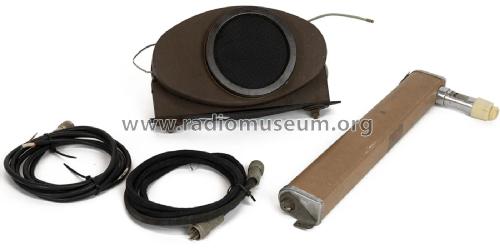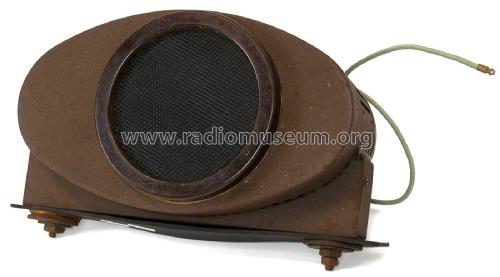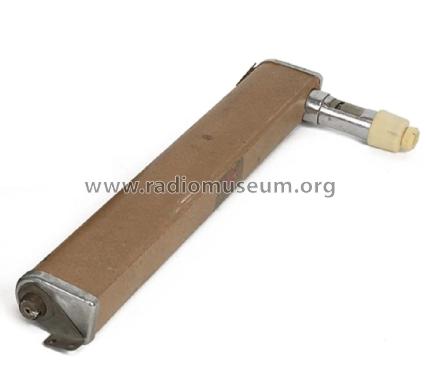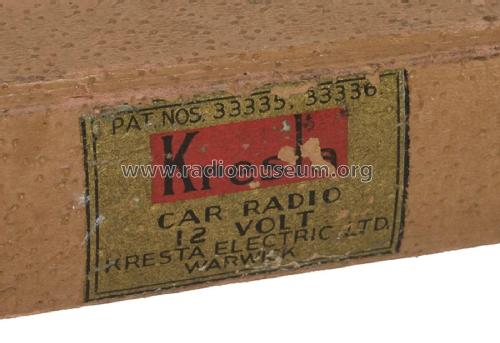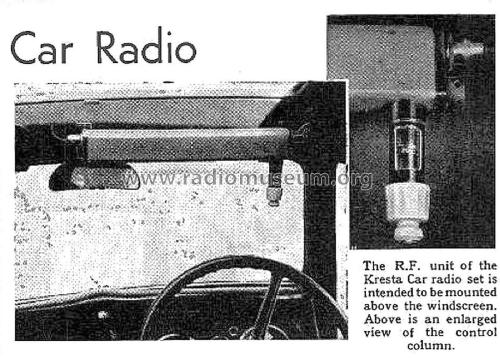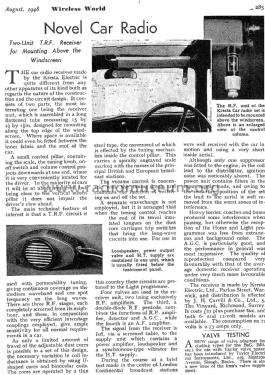Kresta Car Radio
Kresta Electric, Ltd.; Warwick
- Pays
- Royaume Uni
- Fabricant / Marque
- Kresta Electric, Ltd.; Warwick
- Année
- 1947/1948 ?
- Catégorie
- Radio - ou tuner d'après la guerre 1939-45
- Radiomuseum.org ID
- 355698
- Principe général
- Récepteur TRF - sans réaction (pas régénératif)
- Gammes d'ondes
- PO et GO
- Tension / type courant
- Accumulateur (par exemple pour autoradios ou radio) / 6 or 12 Volt
- Haut-parleur
- HP mais de technologie inconnue
- Matière
- Matériel spécial, décrit dans les notes
- De Radiomuseum.org
- Modèle: Kresta Car Radio - Kresta Electric, Ltd.; Warwick
- Forme
- Chassis (pour intégration dans meuble)
- Remarques
-
The Kresta car radio is a pioneering two-unit, tuned radio frequency (TRF) receiver distinguished by its innovative physical design and advanced circuit topology.
Housed in a slender, elongated case, the receiver unit is intended for mounting atop the vehicle's windscreen, offering an unobstructed driver view. This unique configuration, combined with a compact control pillar incorporating tuning, volume, and power functions, places the radio conveniently within reach.
Employing permeability tuning for continuous medium wave coverage and a fixed long wave frequency, the receiver utilizes 3, meticulously shielded RF amplification stages. To accommodate the constraints of the compact chassis, U-shaped cores with binocular coils and adjustable dust cores are used for inductance variation. The tuning mechanism ingeniously drives a steel tape connected to the dust cores, ensuring smooth frequency adjustment.
Four valves are used. Three RF stages with the last being dual-purpose as both RF amplifier and detector, incorporating automatic gain control, while a dedicated valve handles audio amplification.
The receiver unit connects, via shielded cable, to the supply unit housing the power amplifier, loudspeaker, and synchronous vibrator for high-voltage generation.
Road tests in London demonstrated impressive performance, with clear reception of continental stations and effective suppression of ignition noise. The radio's ability to mitigate interference from heavy vehicles is commendable, attributable to careful shielding and filtering. Notably, the audio quality rivals that of many contemporary domestic receivers, showcasing the Kresta's technical prowess.
Manufactured by Kresta Electric Ltd., the Kresta car radio was available in both 6 and 12-volt models, priced at £22 plus purchase tax. With a current draw of only 2.75 amps at 12 volts, it offered efficient operation.
- Prix de mise sur le marché
- 22.00 GB £
- Littérature
- Wireless World (The), London (WW, 79) (Aug 1948, Page 285.)
- Auteur
- Modèle crée par Gary Cowans. Voir les propositions de modification pour les contributeurs supplémentaires.
- D'autres Modèles
-
Vous pourrez trouver sous ce lien 1 modèles d'appareils, 1 avec des images et 0 avec des schémas.
Tous les appareils de Kresta Electric, Ltd.; Warwick
